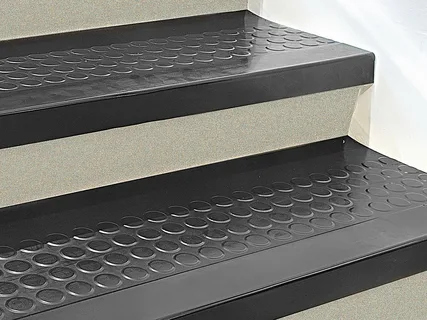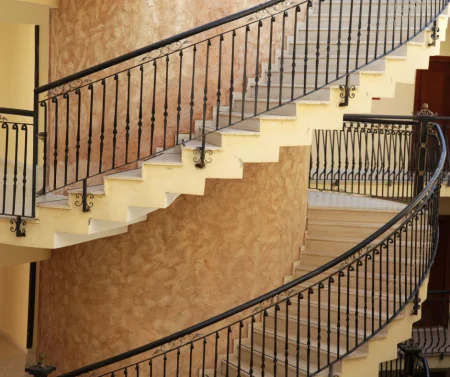Introduction
Choosing the right finish for your Red Oak stair treads can transform the look and durability of your staircase. Whether you prefer a natural wood finish that highlights the oak’s beauty or a stained finish to match your home’s decor, the right choice will enhance both aesthetics and protection.
In this guide, we’ll explore:
✔ The pros and cons of staining vs. leaving Red Oak natural
✔ The best stain colors for Red Oak stair treads
✔ How to apply finishes for long-lasting beauty
By the end, you’ll know which finish works best for your staircase!
1. Should You Stain or Leave Red Oak Natural?
Option 1: Staining Red Oak Stair Treads
✅ Enhances the grain pattern and adds depth
✅ Allows customization to match flooring or decor
✅ Helps mask minor imperfections in the wood
✅ Darker stains can hide wear and tear
❌ Can slightly darken the wood’s natural grain
❌ Staining requires extra time and effort
Option 2: Natural Finish (Clear Coat Only)
✅ Preserves the authentic look of Red Oak
✅ Keeps the wood bright and warm
✅ Easier to maintain over time
✅ Works well in traditional and modern homes
❌ Doesn’t hide imperfections or uneven wood tones
❌ Some homeowners prefer a richer, customized stain
🔹 Best for Traditional Homes: Stained Finish
🔹 Best for Modern Homes: Natural Finish
2. Best Stain Colors for Red Oak Stair Treads
Red Oak absorbs stain beautifully, making it versatile for different color options. Below are some of the best stain choices:
1. Classic Light Oak Stain
🌟 Color: Warm honey-gold tones
🌟 Best For: Traditional homes, farmhouse-style interiors
🌟 Why Choose It? Brings out the natural warmth of Red Oak while adding a soft golden hue.
2. Golden Oak Stain
🌟 Color: Rich golden tones with a slightly deeper hue
🌟 Best For: Homes with warm, earthy color palettes
🌟 Why Choose It? Keeps the wood looking natural but enhances depth and warmth.
3. Medium Brown Stain (Provincial, Special Walnut, Chestnut)
🌟 Color: Rich, neutral brown
🌟 Best For: Classic and elegant interiors
🌟 Why Choose It? Adds warmth while toning down Red Oak’s reddish undertones.
4. Dark Walnut or Espresso Stain
🌟 Color: Deep brown with chocolate tones
🌟 Best For: Luxury homes, modern rustic designs
🌟 Why Choose It? Creates a bold, dramatic contrast and pairs well with white risers.
5. Gray Stain (Weathered Oak, Classic Gray, Driftwood)
🌟 Color: Soft gray with a modern, cool undertone
🌟 Best For: Scandinavian, minimalist, and contemporary homes
🌟 Why Choose It? Neutralizes Red Oak’s natural red tones, creating a modern look.
🔹 Pro Tip: If you want to keep the grain visible while adding color, use a water-based stain instead of an oil-based one.
3. How to Apply a Stain or Clear Finish to Red Oak Stair Treads
Materials Needed:
✅ Sandpaper (120-grit and 220-grit)
✅ Pre-stain wood conditioner (for even stain absorption)
✅ Wood stain (if staining)
✅ Polyurethane (water-based or oil-based)
✅ Paintbrush or staining pad
✅ Clean cloth or rag
Step 1: Sand the Wood Properly
🔹 Sand the treads with 120-grit sandpaper, then finish with 220-grit for a smooth surface.
🔹 Wipe away dust with a tack cloth or dry microfiber cloth.
Step 2: Apply Pre-Stain Conditioner (If Staining)
🔹 Why? Red Oak absorbs stain unevenly, so a wood conditioner helps prevent blotchiness.
🔹 Apply the conditioner with a brush or cloth and let it sit for 10-15 minutes.
Step 3: Apply the Stain (If Choosing a Stained Finish)
🔹 Use a staining pad or cloth to rub the stain into the wood, following the grain.
🔹 Let it sit for 5-10 minutes (longer for darker color).
🔹 Wipe off excess stain with a clean rag and let dry for at least 24 hours.
🔹 For deeper color, apply a second coat.
Step 4: Apply a Protective Finish (Clear Coat)
Regardless of whether you stain or leave the wood natural, a protective finish is essential to prevent wear and tear.
🔹 Oil-Based Polyurethane (Durable but takes longer to dry)
🔹 Water-Based Polyurethane (Dries fast and is low-odor, but slightly less durable)
🔹 Hardwax Oil Finish (Eco-friendly, gives a natural look)
✔ Apply 2-3 coats of polyurethane, letting each coat dry fully before adding another.
✔ Use a fine sanding sponge between coats for a smooth finish.
4. Stain vs. Natural Look – Which One Should You Choose?
| Feature | Stained Finish | Natural (Clear Coat) Finish |
| Appearance | Custom color options | Shows natural wood tones |
| Grain Visibility | May darken grain slightly | Keeps grain fully visible |
| Maintenance | Can hide wear and tear | Shows scratches more easily |
| Best For | Traditional, rustic, luxury interiors | Modern, minimalist, contemporary homes |
| Time to Apply | Takes longer (stain + seal) | Faster (just clear coat) |
🔹 Choose a Stain if You Want:
✔ Custom color matching with floors or decor
✔ To reduce Red Oak’s natural red tones
✔ A classic, rich, or bold statement
🔹 Choose a Natural Finish if You Want:
✔ A modern, Scandinavian, or minimalist aesthetic
✔ To enhance Red Oak’s warm undertones
✔ A quick, easy finish with lower maintenance
5. Common Mistakes to Avoid When Finishing Red Oak Stair Treads
❌ Skipping sanding – Leads to uneven stain absorption.
❌ Not using a wood conditioner – Can result in blotchy staining.
❌ Applying too much stain at once – Causes sticky buildup.
❌ Using cheap brushes or rollers – Can leave streaks and bubbles.
❌ Forgetting a final topcoat – Reduces durability and stain longevity.
🔹 Pro Tip: Always test your stain on a scrap piece of Red Oak before applying it to the entire staircase!
Conclusion
Both stained and natural finishes offer unique benefits for Red Oak stair treads. Whether you prefer rich, dark stains for a luxurious feel or a clear finish for a modern touch, the right finish will enhance the beauty and longevity of your staircase.
By choosing the right stain, applying it correctly, and sealing it with a protective coat, you can ensure your Red Oak stair treads remain stunning for years to come!







